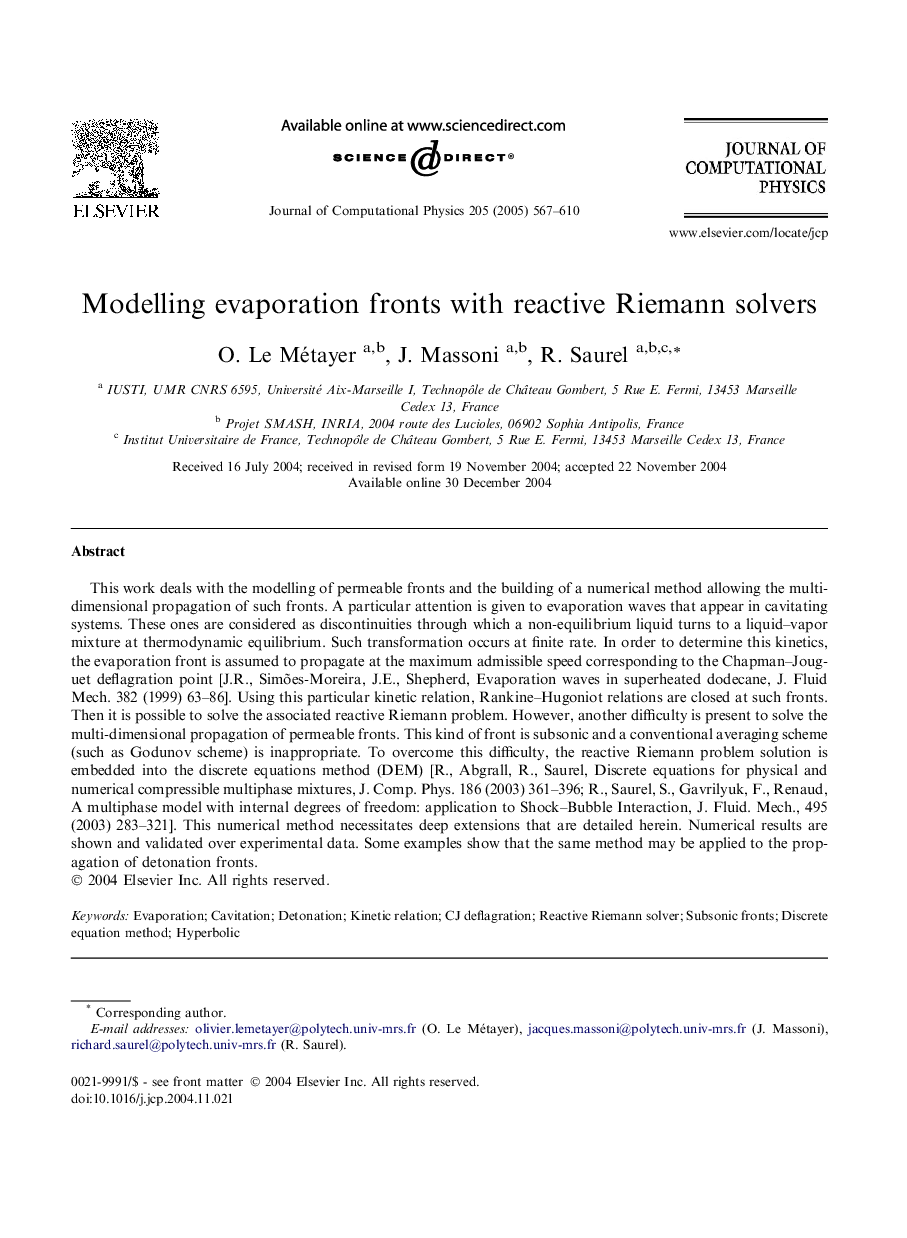| Article ID | Journal | Published Year | Pages | File Type |
|---|---|---|---|---|
| 10357163 | Journal of Computational Physics | 2005 | 44 Pages |
Abstract
This work deals with the modelling of permeable fronts and the building of a numerical method allowing the multi-dimensional propagation of such fronts. A particular attention is given to evaporation waves that appear in cavitating systems. These ones are considered as discontinuities through which a non-equilibrium liquid turns to a liquid-vapor mixture at thermodynamic equilibrium. Such transformation occurs at finite rate. In order to determine this kinetics, the evaporation front is assumed to propagate at the maximum admissible speed corresponding to the Chapman-Jouguet deflagration point [J.R., Simões-Moreira, J.E., Shepherd, Evaporation waves in superheated dodecane, J. Fluid Mech. 382 (1999) 63-86]. Using this particular kinetic relation, Rankine-Hugoniot relations are closed at such fronts. Then it is possible to solve the associated reactive Riemann problem. However, another difficulty is present to solve the multi-dimensional propagation of permeable fronts. This kind of front is subsonic and a conventional averaging scheme (such as Godunov scheme) is inappropriate. To overcome this difficulty, the reactive Riemann problem solution is embedded into the discrete equations method (DEM) [R., Abgrall, R., Saurel, Discrete equations for physical and numerical compressible multiphase mixtures, J. Comp. Phys. 186 (2003) 361-396; R., Saurel, S., Gavrilyuk, F., Renaud, A multiphase model with internal degrees of freedom: application to Shock-Bubble Interaction, J. Fluid. Mech., 495 (2003) 283-321]. This numerical method necessitates deep extensions that are detailed herein. Numerical results are shown and validated over experimental data. Some examples show that the same method may be applied to the propagation of detonation fronts.
Related Topics
Physical Sciences and Engineering
Computer Science
Computer Science Applications
Authors
O. Le Métayer, J. Massoni, R. Saurel,
